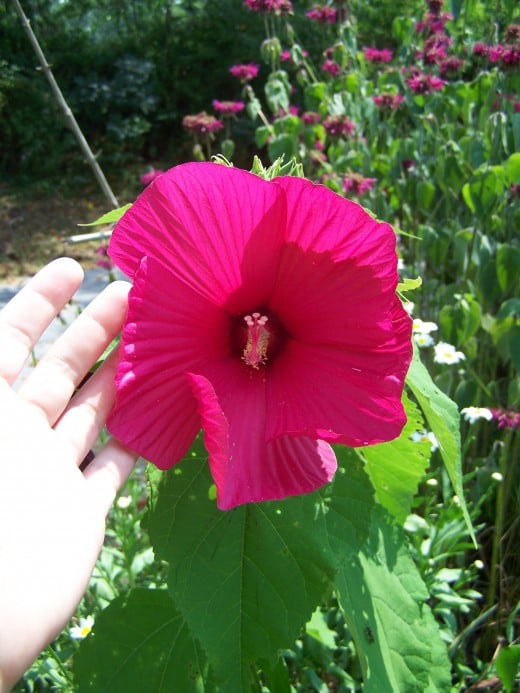How to Grow Hardy Hibiscus

About Hardy Hibiscus
Growing hardy hibiscus is fun and rewarding. The large, showy blossoms offer gardeners a tropical feel, even in northern climates. This is an easy to follow tutorial on planting and getting the best blooms out of hardy hibiscus (Hibiscus acetosella).
Hardy hibiscus has gained popularity for its ability to withstand colder temperatures in cold climates.
A healthy hardy hibiscus will produce blossoms the size of dinner plates.
© Copyright Notice ©
My photographs are mine, taken by me, with my camera. You may use them for personal reasons (desktop backgrounds, personal websites or you can print them for personal use.)
If you choose to use them on websites I require a link back to my HubPages. You may link to my profile or to one of my Hubs.
You may not use them without my permission or for profit.
I sell my art and if you are interested in purchasing it send me a message.
ALL of my articles are MINE and you may NOT use them for anything but reading on my page.
Soil for Hardy Hibiscus
Rich, organic soil produces the best quality hibiscus blooms. The planting hole needs to be a few times larger than the root ball. Hibiscuses need plenty of food while growing. Choose a fertilizer geared towards blooming plants. Too much nitrogen may impede blossoming.
Growing Hardy Hibiscus
Make sure to plant hibiscus the same depth as where they were growing in their pots. Provide full sun for the best blossoms. Water deeply whenever the soil feels dry a couple inches beneath the surface.
In very cold climates, make sure to always provide well-draining soil. Use a thick layer of mulch to insulate the soil. Mulch and proper drainage will give your hibiscus a better chance to come back next spring.
Propagating Hardy Hibiscus
Propagate your hardy hibiscus from root division, seed, stem cuttings and even air layering.
How to Grow Hardy Hibiscus from Seed
After the seeds mature, pick the seed heads. Clean the seeds and soak them in water overnight. Plant each seed one-inch deep in a sunny area. Provide enough water to keep the soil moist, not sopping. After several sets of true leaves appear, repot the seedlings into larger containers. Nip the top growth off to promote bushing. You new plants may or may not bloom true to form and color.
How to Root Hardy Hibiscus from Stem Cuttings
Remove cuttings four to six inches in length scraping the outer bark
just as in air layering. Use rooting hormone and pot in moist, loose soil. Provide a shaded area until the plants are growing well.
How to Air Layer Hardy Hibiscus
Scratch the bark off the stems so the inner white layer is exposed. Apply rooting hormone to the scraped area. Wrap the cut in damp sphagnum moss and plastic. Do not allow the moss to dry out while the limb is rooting. When healthy roots appear, cut the new roots and pot in a well draining potting mix. Keep moist but sodden.
Pests and Diseases of Hardy Hibiscus
Prevention is better than a cure. Provide ample airflow between plants and full sun to prevent most pests and mold. Neem oil, natural pyrethrin and natural predators work wonders on pests. Even 100% natural pesticides can be dangerous so use them sparingly, if at all.
- Powdery Mildew
- Japanese Beetles
- Aphids
- Sawfly larvae
- Whiteflies
- Mites
Prolonging Blooming and Pruning Hardy Hibiscus
Deadhead fading blossoms if you do not want seeds. Remove damaged or disease limbs and keep your hibiscus well-fed.
Come on Y'all!
Get your shovel and some compost and plant a few of these tropical-looking beauties this spring!








